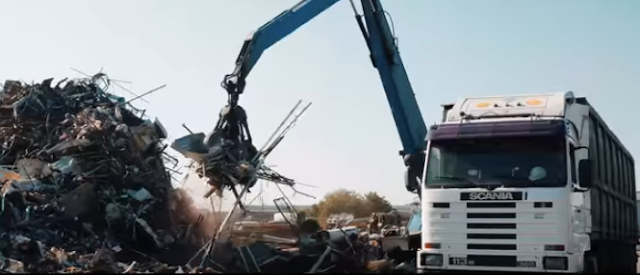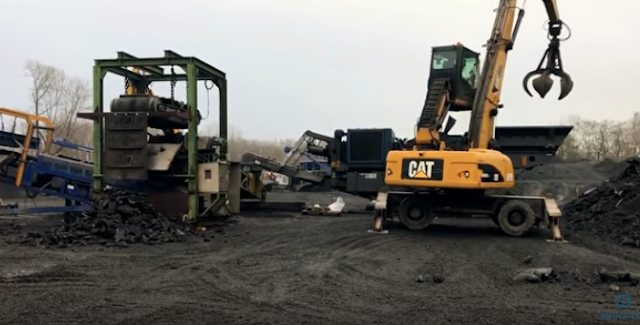1. Recycling Metal.
1.1 Recycling Ferrous Metal.
1.2 Recycling Non Ferrous Metal.
1.3 Recycling metal at home.
2. Crusher Machine For Recycling of Steel Slag.
1. Recycling Metal.
Millions of tonnes of Metal are recycled each year in the UK alone, generating billions of pounds in revenue. Just over half of the recycled metal is exported to meet foreign demand and the rest is reprocessed within the UK to make more metal. Metal is an extremely useful and versatile material that is used to make many items in every day use including cars, trucks, ships, aeroplanes, household appliances, railway tracks, cutlery, ovens and of course it is also used for packaging.
One major advantage in recycling metal is that it can be recycled over and over again without losing any of the properties of the metal itself. Metal is therefore a valuable commodity and as such, when a metal item reaches the end of its life, it can be used 100% of the time to make new metal. The most common metals in every day household use today are Steel and Aluminum - Steel is used to make food cans and Aluminum is used to make soft drink cans.
You can tell the difference between Steel and Aluminum using a magnet because Steel will stick to a magnetic whereas Aluminum will not. This makes the sorting of various types of metal at recycling depots a lot easier as opposed to say plastic recycling where sorting is a much more complex practice. When recycling metal, it is divided into Ferrous and non-Ferrous metals.
1.1 Recycling Ferrous Metal.
 |
| Ferrous scrap metal |
1.2 Recycling Non Ferrous Metal.
 |
| Nonferrous scrap metal |
1.3 Recycling metal at home.
 |
| Various types of metals can also be recycled at home. |
Aluminum cans are compressed and melted down, impurities are removed and again, the Aluminum is made into ingots which can then be rolled into Aluminum sheets before being turned into new cans or other products. This whole process is quite rapid and an Aluminum can is often back on a supermarket shelf in as little as 6 weeks.
Most local authorities now provide a means to dispose of empty cans either by roadside collection or at a recycling depot so make use of these facilities and encourage others to do the same as in this way you can help protect the environment and save energy.
Why it is important to recycle metal
Obviously it makes more sense to make use of available resources, particularly when it is easy to do so, rather than to continually deplete the earth's natural resources. The main environmental benefits involved in recycling metal are as follows:
- It takes a lot less energy to melt down waste metal and recycle it than it does to produce new metal
- Using recycled metal reduces CO2 emissions and air pollution
- Less water is used and less water is polluted
- Reduces the need to mine the raw materials required to make the metal such as Iron ore for Steel, nickel for Stainless Steel and Alumina and Bauxite for Aluminum.
- Reduces the amount of metal going to landfill as despite a growing awareness of the value in recycling metal, a lot of household metal waste from cans is still ending up in landfill sites
2. Crusher Machine For Recycling of Steel Slag.
 |
| Steel slag |
The main components of steel slag are calcium, iron, silicon, magnesium, aluminum, manganese and phosphorus oxides. The main use of the slag are as follow. First, it can be instead of lime as a solvent to return the blast furnace or sintering furnace within the company itself. It can also be used for roadbed, railway embankment, and as cement raw material, soil, etc.
The processing technology of steel slag are cold abandoned law, hot pour method, splashing cold plate method and slag water quenching method. Generally a closed loop production process will be used. And we can receive about four high-quality and high value-added products by the process of crushing and screening, vacuum ball milling, dry magnetic separation and classification processes of wind. The four products are respectively high-quality steel scrap, high-grade iron powder, steel slag powder used as cement, the steel slag aggregate used as asphalt concrete surface layer in the road. After completion of the entire production process, slag can be achieved zero emissions, and the environment pollution of the slag is completely solved.
Many engineering machinery companies specialize in producing ultra-fine grinding and screening equipment for steel slag processing. For instance, the European version jaw crusher, hydraulic cone crusher, Symons cone crusher, impact crusher, LM vertical milling machines and other equipment. In China, one company has established a successful steel slag crushing magnetic line which can handle 1 million tons of slag. To have the targets of having all the slag processed, recycling, circular economy, emissions-reduction, another company invested about 8 million yuan (about $123,0000) on a steel slag crushing magnetic line. And they purchased jaw crusher, cone crusher and Symons cone crusher from engineering machinery company. New production line was designed and installed by them.
The magnetic line is a fully automated production, more scientific and rational, easier to use, greatly improving the productivity of labor. Production line and delivery system installs the dust removal device, effectively reducing the dust emissions. The entire production process is formed by two jaw crusher, a fine break CS Symons cone crusher, five iron, five screening and other components. Because the line has good ability of magnetic separation and recovery of ferrite, the steel production greatly is improved.






No comments:
Post a Comment